About Utrecht
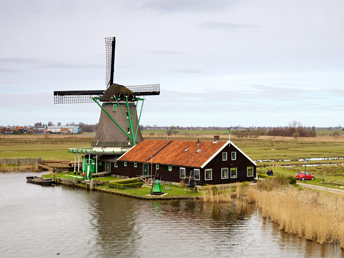 |
|
|
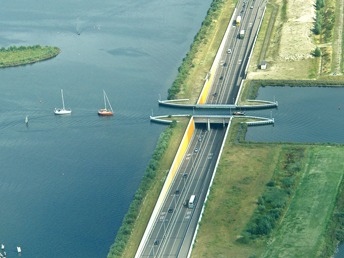 |
Seven million tourists and vast numbers of business people visit the Netherlands each year. The Netherlands is a hospitable country and easy to travel. No other country in the world is more strongly associated with water. Much of the Netherlands is a delta formed by three big rivers - the Rhine, the Maas, and the Schelde - and from ancient times ingenious solutions had to be implemented to help people keep their heads above the water. The low-lying position of the Netherlands intrigues and fascinates many foreigners. Land below sea level, what does that look like? Many imagine the "Low Countries" as marshy, half-submerged pastureland. A surprise awaits them at Schiphol, the national airport and in many other areas which although lying below sea level, impress with their beautiful flower fields. The term 'Dutch landscape' immediately conjures up images of vast polders and grassy meadows under high cloudy skies, as depicted in the paintings of so many Dutch masters. Perhaps we might also picture a landscape of lakes dotted with white sails or one of the sand dunes and broad beaches of the North Sea coast. But we would certainly not imagine the coniferous forests of the Veluwe, the heathlands of Drenthe or the hills and half-timbered cottages of Limburg. Yet these landscapes are just as 'Dutch' as the polders, the meadows, the lakes, and the sand dunes.
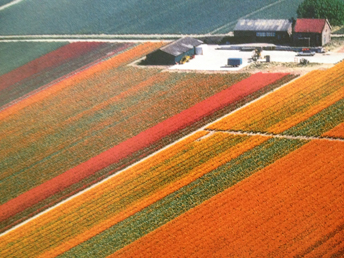 |
|
|
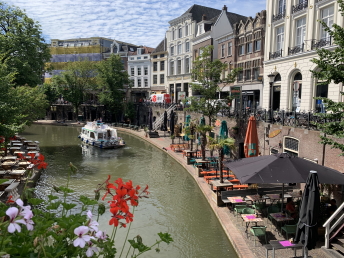 |
Further, the Netherlands is a land of flowers. People devote a great deal of attention to their gardens. Beautiful gardens can be seen in each town or village and beautiful flower fields can be seen outside the residential areas. Dutch towns and villages are just as efficiently arranged as the surrounding countryside, but what is particularly striking is the lack of any large metropolis. In the eyes of most foreigners, even the big cities are no more than provincial towns, though they do not have a strong cosmopolitan and historic character. The oldest structures in the Netherlands are in the thinly-populated province of Drenthe. They are 53 communal megalithic tombs. As for the cities, there are historic ones, such as Utrecht and Maastricht, which are among the many Dutch cities that are small according to international standards but nonetheless extremely charming and historically interesting. There are also modern cities, such as Rotterdam - the world's largest seaport, which are attractive with their modern architectures. This inspiring environment is complemented by many prestigious universities, including the three Dutch technical universities, namely Delft University of Technology, University of Twente, and Technical University of Eindhoven.
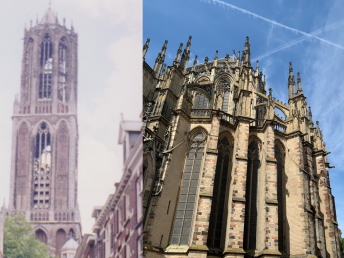 |
|
|
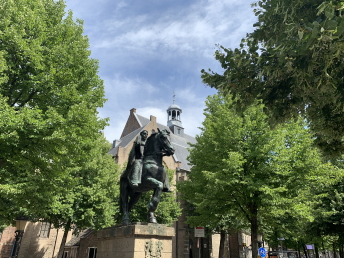 |
The city of Utrecht, capital of the province with the same name, is in the midst of the Netherlands. Its recently modernized Central Station is the busiest railway hub of the country with more than 1000 departures per day. While part of the Randstad conurbation (with Amsterdam, Rotterdam, The Hague) in the western part of the Netherlands, it takes less than 5 km from the Dom Tower in Utrecht’s city centre to reach the woods and rural landscape stretching to the German border.
In the political history of the Netherlands the Union of Utrecht, signed in 1579, can be considered as the marking of the dissolution of the Dutch provinces from the control of Habsburg’s Spain, and therefore as the start of the Netherlands as an independent country.
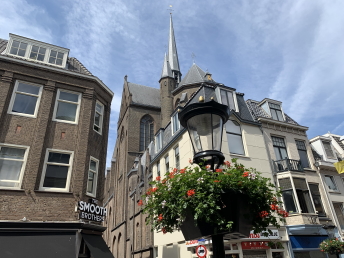 |
|
|
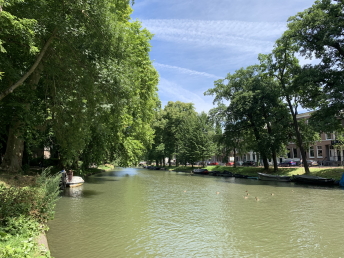 |
As so often, physical geography partly determines history. In the case of Utrecht, it is the place where three types of landscape meet: in the east the woods and hills of the Utrechtse Heuvelrug (‘hills’ are of course Dutch-sized, the highest point 69,2m above sea level!), in the south and south east the river landscape of the Kromme Rijn (‘bended Rhine’), and in the west and north the peat meadows. In Roman times this meeting point was the place of a military Castellum, part of a long chain of such Roman border fortifications along the Rhine). In the early Middle ages Utrecht developed into a centre of the Roman Catholic church and of government, and also as a trading place. The heirs of these early developments are the Dom Tower and the Jaarbeurs (a huge complex of trade fair facilities next to the Central Station).
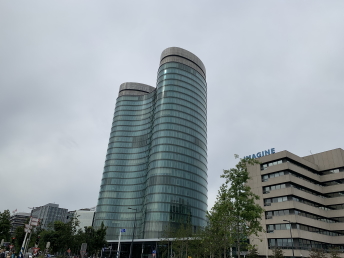 |
|
|
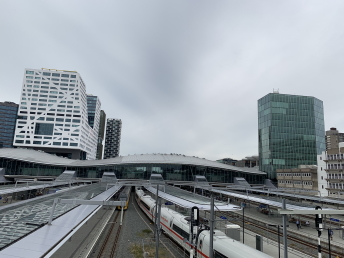 |
Nowadays, Utrecht is also an important cultural centre with many specialised museums and many podia for the performing arts. Apart from the architectonic value of places like the ancient Dom Tower and the iconic concert hall, they represent also focal point for the identity of Utrecht. It is said that people born and bred in Utrecht might come to live outside the city, provided that they are able to see the Dom Tower from where they live!
Being a university town with over 30.000 students at the Rijksuniversiteit Utrecht and many more at several universities of applied sciences Utrecht brings a very vibrant social and cultural life. It brings also a huge traffic of bicycles, which can be rather difficult to navigate in the centre. The Oude Gracht and the Wed are focal streets for restaurants and cafes, busy until late at night.
While the medieval origins can clearly be traced in building, street patterns and canals in the historical core of Utrecht east of the Central Station, the city has spread in all directions for both residential areas and business areas. Around the centre, just outside the canals encircling it, fine specimens of public housing can be found. In modern times, businesses are attracted by location and infrastructure and predominantly located near the motorways. Perhaps one of the nicest features of Utrecht is that despite the spread, distances are always short. You can reach any place in Utrecht from the Dom Tower in about 20 minutes time by bicycle, mostly using dedicated cycle paths.